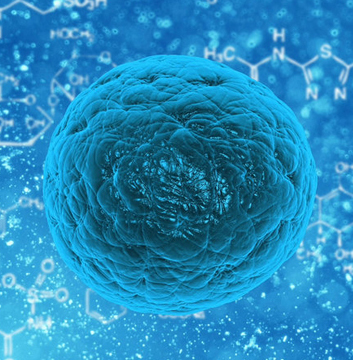
Researchers at University of California San Diego and University of California San Francisco have mapped out how hundreds of mutations involved in two types of cancer affect the activity of discrete groups of proteins that are the ultimate actors behind the disease. The work points the way to identifying new precision treatments that may skirt side effects common with much current chemotherapy.
The effort, dubbed Cancer Cell Mapping Initiative (CCMI) https://ccmi.org, is led by Trey Ideker, PhD, professor at UC San Diego School of Medicine and Moores Cancer Center, and Nevan Krogan, PhD, director of the Quantitative Biosciences Institute at UCSF, who are co-senior authors on a set of three related studies that describe the map. The papers appear in the October 1, 2021 online issue of Science.
“The bottom line is that we’re elevating the conversation about cancer from individual genes to whole protein complexes.
For years, different groups have been discovering more and more mutations that are involved in cancers, but in so many different genes that scientists can’t make sense of it all. Now we’re able to explain these mutations at the next level, by looking at how the different gene mutations in different patients actually have the same downstream effects on the same protein machines. This is the first map of cancer from the protein complex lens.”
Trey Ideker, PhD, Professor, UC San Diego School of Medicine
Hierarchy of cancer protein systems: Each node represents a protein system carrying out cellular functions such as mobility or immune signaling. Nodes farther out on the branches represent systems with few proteins and highly specialized processes, while those closer to the root have many proteins and correspond to generalized processes. Darker colored systems, and their subsystems, are under selection in more tumor types.
DNA contains the instructions for building proteins, which then interact with other proteins, almost always in large groups called complexes. These protein complexes, in turn, make up most of the machinery of cells, dictating basic cell functions like feeding, growth and whether the cell develops into cancer. If the underlying DNA has a mutation, the resulting protein machines often will as well.
In cancers, a subset of genes is commonly mutated, Krogan said, and each of these genes can be mutated in hundreds of different ways. In addition, the function of a particular protein may be different in different types of cells, so a mutation in a breast cancer cell might have different effects on protein complexes than that same mutation in a cell in the throat.
CCMI’s goal was to map the constellation of protein complexes formed by approximately 60 proteins commonly involved in either breast cancer or cancers of the head and neck, and to see what each looked like in healthy cells. Alongside that effort, they created maps of how protein complexes are affected by hundreds of different gene mutations in two cancerous cell lines.
“This is an exciting advance that not only provides a treasure trove of new protein-protein interactions, but also the computational tools to robustly analyze the data and put it in a meaningful context for others to use,” said Shannon K. Hughes, PhD, deputy director of the Division of Cancer Biology at the National Cancer Institute, part of the National Institutes of Health, which funds CCMI. “The methodology can be expanded to other tumor types and other diseases, which is very exciting. Importantly, these large-scale, systems-level mapping endeavors require a strong collaborative team, which has clearly been demonstrated within the CCMI.”
